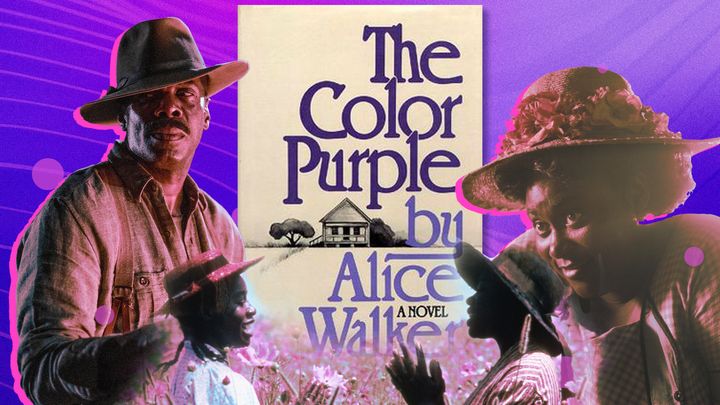
There was a time when you couldn’t go to a Black woman’s home and there wasn’t a copy of Alice Walker’s “The Color Purple” lying around somewhere, probably dogeared with highlighted passages. Published in 1982, the novel comforted, challenged and mirrored many Black women. It was the literary form of saying, “I see you, I hear you, I am you.”
Tracing the journey of a demure Black girl named Celie in early 1900s Georgia who finds her way out of decades of abuse by men in her family through the help and love of Black women, “The Color Purple” was for Black women, about Black women and by a Black woman.
Particularly in the ’80s, when Black women’s voices, accomplishments and experiences were not only devalued but unacknowledged, that trusting, intimate dialogue the book sparked was special. Spectacular even.
So, it meant something when the novel was awarded the Pulitzer Prize in 1983. It even meant something when it was later adapted into a 1985 movie starring Whoopi Goldberg as Celie, and Oprah Winfrey as her friend and stepdaughter-in-law, Sofia. But, it was helmed by Steven Spielberg, a white male director.
That was supposed to mean that more people would see and engage with an indelible Black women’s story.
In other words, “The Color Purple” would no longer be an unequivocally Black women’s story. While the essence of it was undeniably there, “The Color Purple” had become property of a white Hollywood machine — and available for many interpretations and adaptations. That includes Broadway musicals in both 2005 and 2015, and now a glossy new musical film hitting theaters on Dec. 25.
This latest iteration of “The Color Purple” is heartfelt, vibrant, and remarkably performed by a lead cast that includes Fantasia Barrino, Danielle Brooks and Colman Domingo. But it’s directed by another man, Ghanaian filmmaker Blitz Bazawule, who was most recently behind Beyoncé’s “Black is King” visual album.
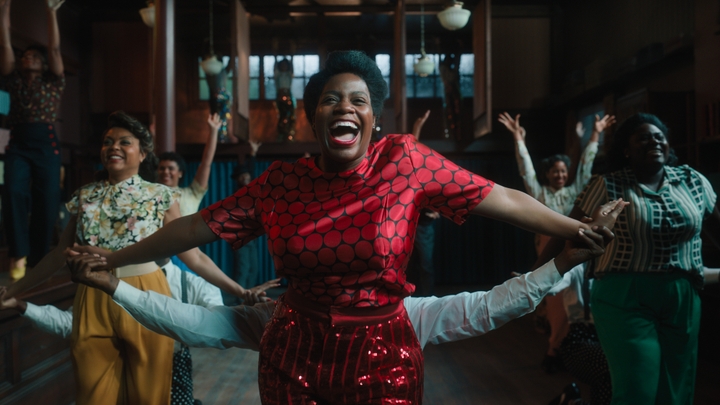
The film’s promo poster boasts that it’s “a bold new take on the beloved classic.” But it’s not, really. It’s also written by a man, Marcus Gardley, who is also Black. Spielberg is a producer, and the film feels like more of the same safe, accessible versions we’ve seen in the past.
It resurfaces questions prior adaptations raised: What happens when multiple agendas are applied as well as racial and gender perspectives enter the conversation? Or when a racist establishment like Hollywood gets a hold of a story like “The Color Purple?” What does it mean when the Great White Way adds song and dance numbers to it, repackaging it to be more palatable to broader audiences?
Or when figures like Winfrey, who co-produced Bazawule’s film, say that they’re bringing Walker’s story “to a new audience?” And where does Walker’s voice actually fit into “The Color Purple” today?
As audiences inevitably begin to think about the self-proclaimed boldness of the new “Color Purple” or whether it corrects elements of past versions, we should also consider what we want with a new film — and actually ponder how it functions inside its cultural context.
In 1985, Hollywood’s image of young Americana, a theme also depicted in “The Color Purple,” was mostly white, often adventure-filled and wholesome. Think “The Goonies,” “The Breakfast Club” and “Back to the Future.” “The Color Purple” seemed like an intriguing outlier.
Black men in particular were frustrated by how the first movie depicts men ― and they spoke up about it back then.
“It is a very dangerous film,” Leroy Clark, a law professor at Catholic University, told the Washington Post in 1986. “The men are raping, committing incest, speaking harshly, separating people from their families or incompetent. It reinforces the notion of Black men as beasts.”
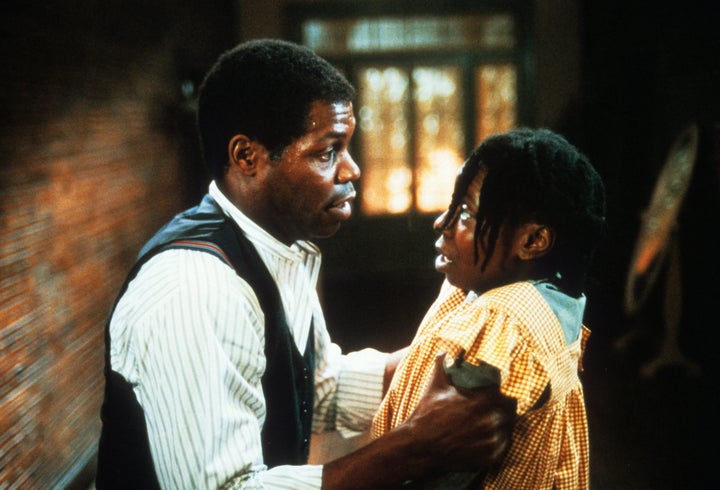
On one end, it says a lot that some audiences had such a visceral response to Walker’s work on-screen, which among many other things, helped break a deafening silence about abuse within the Black home. On the other, it’s hard not to question Hollywood’s role in that dialogue.
Was Hollywood actually curious about what “The Color Purple” depicts, or was “The Color Purple” a way for the industry to make money off of and perpetuate a certain image of Black men — and Black women, for that matter?
For Walker’s part, she never had any qualms about Spielberg directing the movie. “It just never occurred to me,” she told the Hollywood Reporter in an interview leading up to this year’s film. “It seems really absurd to [call someone] racist when someone says, ‘Oh, I’d love this, and I will do everything I can to make it something you love, too.’ ”
That’s fair. And the movie remains a beloved classic 38 years later. But some feel that Spielberg’s film doesn’t adequately grapple with the novel’s many complexities. Raven Maragh-Lloyd, assistant professor in the department of African and African American studies at Washington University, remembers it as one-dimensional.
“I think what we took away the first time was pain and trauma,” Maragh-Lloyd said. “Part of that had to do with the beautiful acting from Whoopi Goldberg and Oprah. And maybe because we had Steven Spielberg directing. Trauma looks different from a white lens.”
True. And while Spielberg might have had the best intentions, the film seems more interested in scenes of violence and despair than its fewer moments of love and tenderness, both familial and romantic, that it shares with Walker’s story.
For instance, Celie’s (Goldberg) love affair with Shug (Margaret Avery), a fiercely independent blues singer, is reduced to a kiss in the film, evading Walker’s queer themes. But the film’s issues have more to do with ’80s conservatism and fewer opportunities for Black filmmakers at the time than anything else. That isn’t always considered when reflecting on the film today.

“The ’85 version tells you so many things about that time,” said Novotny Lawrence, associate professor of cinema and media studies, and director of the Black Film Center & Archive at Indiana University. “That Steven Spielberg was tapped. There’s a reason for that. Why is Oprah in it? There’s a reason for that. Why Whoopi Goldberg? There’s a reason for that. It’s all there.”
Winfrey was a recognizable face among both Black and white audiences as the host of a local Chicago morning talk show. Similarly accessible at the time was comedienne Goldberg, who gained prominence in her own one-woman show as comedy legend Moms Mabley.
And Spielberg? Well, it’s hard not to wonder whether the film would have been made at all if a white man and a prominent filmmaker at the time wasn’t behind it. That’s a difficult truth.
“How Spielberg and the cast, [and] how the script explores the themes — that’s all about the ’80s context,” Lawrence said. “And if you think about it in terms of Reaganism, and this very conservative time in entertainment, there’s a serious void in terms of Black representation.”
This valid point about historical context when we think about the way the entertainment industry has handled marginalized experiences is a tricky one, though. Because not a whole lot has changed about the way some Black stories are treated when they enter the zeitgeist even in later years of “The Color Purple” journey.
Adaptations of Walker’s story have almost always made some concessions for whatever era it’s been in — and for the audience it’s targeting.
When Broadway set its sights on the story for a 2005 musical production, the feeling was that it might present a new opportunity to bring “The Color Purple” closer to Walker’s literary text. One less concerned with compromising to reach a broader audience, that was thematically dimensional and back in the hands of the Black community.
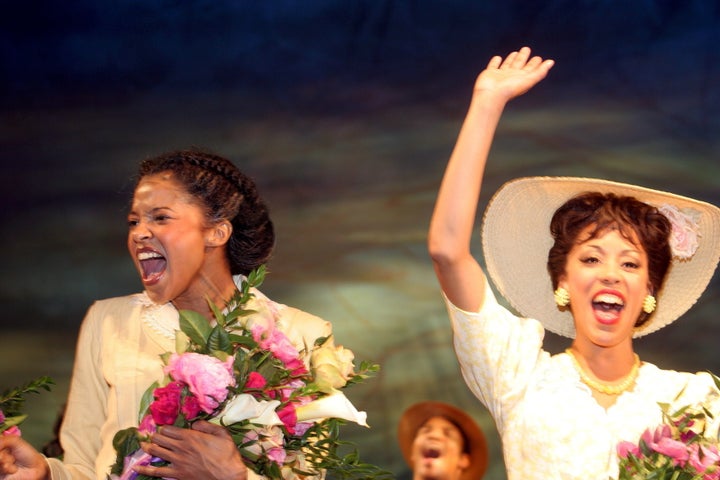
Some of that happened. Broadway’s first edition of “The Color Purple,” co-presented by Winfrey and Quincy Jones, a producer on the 1985 film and its music composer, was a glorious production. Ignited with sunny hues and compassionate songs that captured the many rich emotions of the story, it drove huge crowds of Black audiences to Broadway.
It created an almost familial atmosphere in a space where white attendees, like the many seated for “Little Women” and “Spamalot” that same year, had dominated for too long.
Significant and necessary change was happening in some regard. But the 2005 musical was still a production directed by a white man, Gary Griffin, from the book written by playwright Marsha Norman, a white woman, though with music and lyrics by a largely Black trio of composers including Brenda Russell. And a mostly Black cast.
That’s not to suggest that just because this adaptation was once again helmed by a white man made it somehow subpar. It was still extraordinary in its own right. But the Broadway show also begs the question of what introducing an adaptation to a brand new audience or era means when it doesn’t all the way meet the demands of that era.
The 2005 musical also side-steps the queerness of the original narrative once again.
“Amid all this faith-based dramaturgy, it’s no surprise that the lesbian element in Celie’s story gets swept aside,” wrote Jeremy McCarter in a 2005 review of the show in The New Yorker.
“The love [Celie] shares with Shug in Walker’s book is dispatched here with a couple of timid kisses and some platitudinous lyrics,” McCarter continued. “Hollywood has gay cowboys, and a Broadway musical gets nervous about an awkward hug? Who’s responsible for this madness?”
There is something to be said about the fact that a notoriously conventional Hollywood found space for the categorical queer white film, “Brokeback Mountain,” the same year Broadway gave us a modestly queer Black female heroine. It makes you wonder why they would reimagine a previous adaptation when it’s not actually reimagined at all.
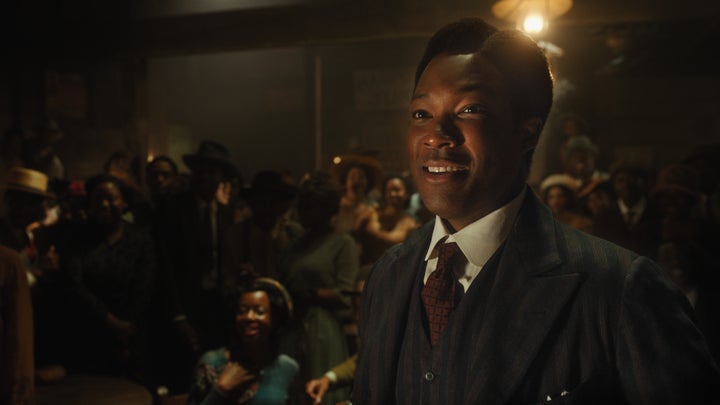
The same goes for the fact that Harpo, Sofia’s abusive husband in the story, becomes “cheery,” as The New York Times described the character, in the Broadway musical. In 2015, The New Yorker referred to Harpo in the then-new Broadway revival of the show as “goofy.”
And the same could be said about Harpo (Corey Hawkins) in Bazawule’s new film. There’s, as Lawrence put it, “a grit’ from Walker’s novel that feels long gone since 1983. The connection between novel and present day seems a bit broken.
“It starts to beg the question that we have as scholars and critics: Who’s the author of this film?” Lawrence said. “Now we have yet another version. Who is the author? Is it Bazawule? Is it Fantasia [Celie]? Is it [white male producer] Scott Sanders? And what is the ultimate goal here?”
Lawrence’s questions are especially important when you consider that this new “Color Purple” still doesn’t have a Black woman behind the camera and Spielberg is a bold name producer. Still, Winfrey has been crucial to the film’s marketing throughout the year. Walker and her daughter, Rebecca, are also co-producers with Sheila Walcott, a Black woman.
But whose vision is this, really? The new generation gets their own “The Color Purple,” but to what benefit? There are very minimal differences in the 2023 film.
“In essence, what we get is another facsimile,” Lawrence said. “It becomes farther distanced from the original novel. And I guess for me it becomes in the name of what.” That’s not a question Bazawule’s movie really answers.
It actually inherits some of the same constraints that plagued the ’80s film and Broadway adaptations, including how softened it is. In addition, Celie and Shug’s (Taraji P. Henson) sexual relationship, while more forthright than past iterations, is still relatively mild.
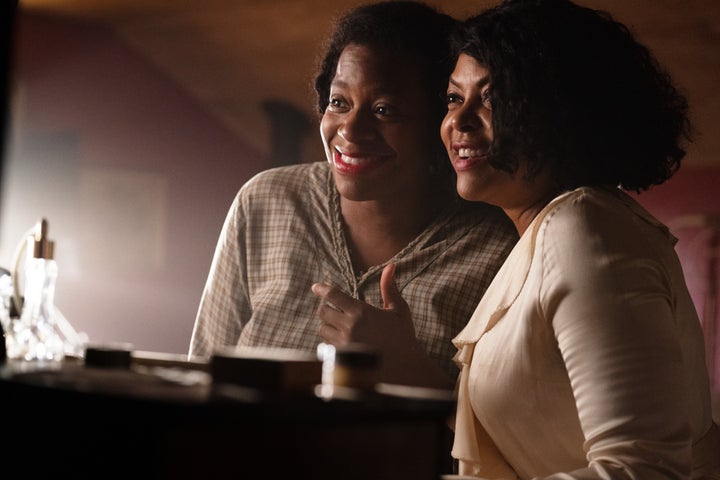
Perhaps what’s missing from some of the framing in adaptations of Walker’s work is the Black feminist lens that helped define it. That’s not a knock against what “The Color Purple” is doing in 2023 with, finally, a Black director. It’s just, well, different, a bit more distant in that way. And it assumes we should get comfortable with that, like we have many times before.
To be fair, this notion of compromise for the sake of, presumably, keeping “The Color Purple” and Walker in the cultural conversation and rightfully profitable per Hollywood standards, isn’t anything we haven’t seen before. This has been a familiar path for many successful Black feminists before and since Walker.
“Is the alternative nothing?” Maragh-Lloyd asked. “I think there’s a way in which we can use Black feminism. Folks like Patricia Hill Collins have written about this in terms of “working the cracks. So, maybe there are ways we can exist in these hyper capitalist spaces.”
Before Maragh-Lloyd, who hadn’t watched the new film prior to our conversation, continued, she jokingly suggested that she might just be having “an optimist day.” Still, she made a great point.
“We can exist in these hyper-capitalist spaces that we’re gonna be anyway, and find a way to tell our stories from our perspective,” she added. “And maybe it goes completely wrong and completely does a disservice to the original work, and maybe it doesn’t. It’s a risk.”
But a necessary one. “That tension is always gonna be there,” Maragh-Lloyd said. “The radical shunning of the capitalists, which is totally viable. Makes sense. Negotiating and working within those cracks, too. That tension’s definitely not new with ‘The Color Purple,’ and it’s not going away anytime soon.”
It’s a vital arrangement for the sake of Black women’s stories like Walker’s to survive, and at a time when they’re sadly no less relevant than hers was 40 years ago. As Celie, Fantasia says no more to her abusive husband, Mister (Domingo), echoing many Black women today in our #MeToo era.
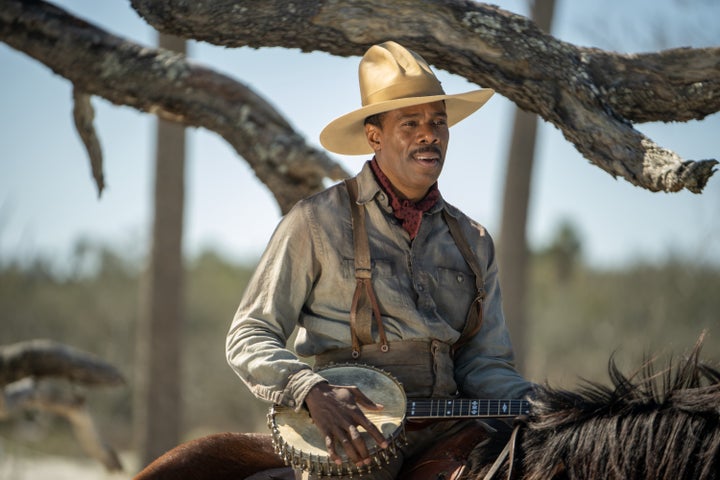
And maybe now in 2023 audiences’ response to the new film’s Black male characters like Mister and even Celie will be different than they were in 1985. Maragh-Lloyd, though, isn’t certain about that.
“We haven’t moved much further [with examples like] Megan Thee Stallion and how she’s been treated with Tory Lanez’s prosecution,” Maragh-Lloyd said. “We’re still working out how to hold Black men accountable in public while protecting Black women without ‘airing our dirty laundry.’”
That’s always been part of the conflict some have felt about “The Color Purple.” “There’s a real tension here of publicity, of being public about our trauma,” Maragh-Lloyd continued. “Because we know what it means to disparage Black folks, but Black men in particular, in public.”
What’s interesting about that, though, is how many versions of the story have handled Mister’s character by the end. Even the 2023 relationship between Celie and Mister later feels conciliatory years after she frees herself from him, which is somewhat lightheartedly portrayed by Barrino and Domingo.
You can’t even really blame Hollywood fluff for that. That has always been a complicated reality in Walker’s original story. It also might have benefited from a worthy update.
But Maragh-Lloyd recalled being struck by that when she first read the novel, and immediately did a “deep dive” into the author’s life to try to figure it out. Ultimately, she determined that that was part of the brilliance of Walker and her work, she added. It captures the complexities of not only forgiveness, a slippery subject today, but also the way we view Black feminism.
“She forces you to face your own contradictions,” Maragh-Lloyd said. “In theory, we may all believe in forgiveness. But when the rubber hits the road, we probably don’t, as I found when reading and when watching.”
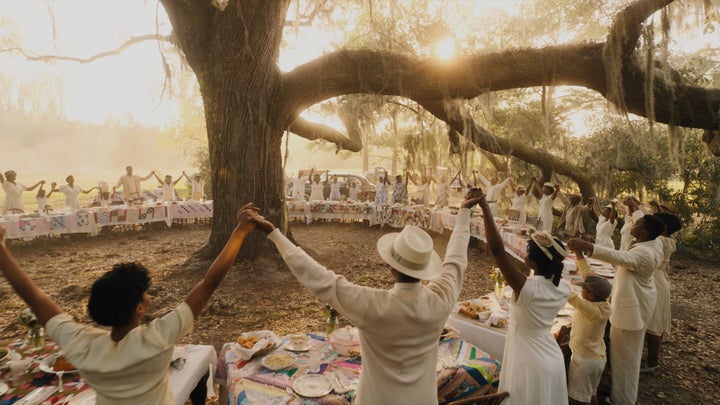
Like so much about “The Color Purple,” this aspect of forgiveness isn’t so black and white, and far from easy to digest.
“Maybe it’s just prying open this idea of forgiveness,” Maragh-Lloyd explained, “particularly in a time where we’re talking about complete cancellation and cancel culture. Maybe understanding who we are as humans while we have conversations about accountability ― both can exist.”
Familial reconciliation comes with its own burdens as well. “How do we forgive family members because that’s…” Maragh-Lloyd paused as she searched for a word.
Tricky?
“Tricky,” she agreed. “That’s right.”
That might be a lot for some audiences to grapple with, but perhaps in a good way. Still, it makes you wonder whether “The Color Purple” has had enough of a trajectory to validate its return to theaters this year. Or, maybe more accurately, have we as a culture or Hollywood even evolved enough to adequately grapple with the story’s many complexities? Apparently not.
Because we could really just be here again in the next 20 years, maybe with a talented Black female filmmaker at the helm, having the same conversations. That doesn’t sound productive. Putting Hollywood greed and whatever new Oscar opportunities aside, revisiting and actually contextualizing the films that already exist might be a more valuable option for all of us.
But Maragh-Lloyd understands how “The Color Purple” adaptations could be viewed as a progression, particularly with their updated technology, and the way they fold into the more forward-thinking ways we talk about and reflect Black women’s stories and Black people on-screen. She offers a caveat, though.
“There’s been progress,” she said. “But I think we do have to be careful that we don’t equate progress with perfection or progress with completion because we still have a long way to go.”
CORRECTION: A previous version of this story stated incorrectly that “The Color Purple” is set in rural Mississippi. It takes place in Georgia.
